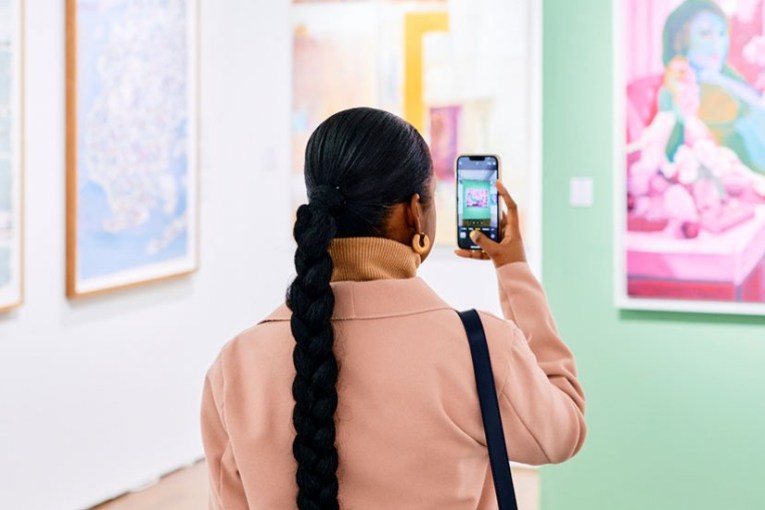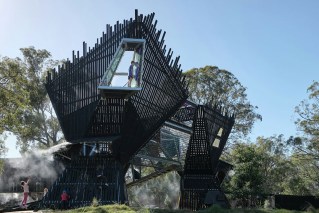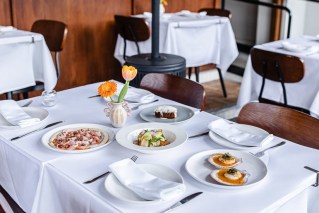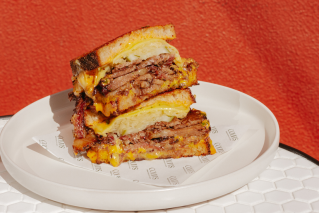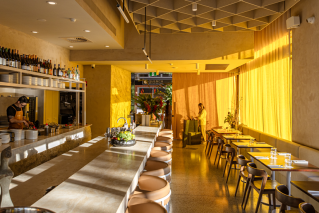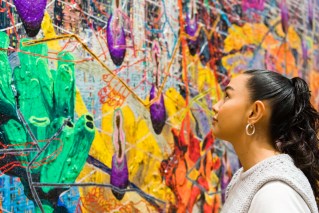How thousands of struggling artists took on insurance giant – and won
Thousands of Australian artists have been spared changes that could have left them uninsured and out of work after their provider performed a policy backflip.

Sculptor Michael Meszaros poses for a photograph at his studio in Melbourne, Thursday, April 27, 2023. Thousands of Australian artists have been spared changes that could have left them uninsured and out of work after their provider performed a policy backflip. (AAP Image/Joel Carrett) NO ARCHIVING
For more than a decade, the National Association for the Visual Arts has issued artists and curators with a low-cost policy provided through insurer QBE and broker Local Community Insurance Services.
QBE recently decided it would no longer cover a wide range of studio-based work, while insurance for public artworks was also cut.
Penelope Benton from the visual arts association described the changes as massive.
“Insurance is really critical to sustaining work and practices and without adequate insurance, many people just cannot undertake projects,” Benton said.
After being contacted about the policy changes, QBE staged a reversal, walking back several of the most contentious carve-outs.
QBE said late on Thursday the matter had been resolved and it did not wish to comment further.
However, Benton said other carve-outs remained and the insurer was still making changes to policies many artists relied on.
Alterations to the $316 policy were first flagged in November 2022, and the specifics began to emerge before Easter.
Benton said some aspects had been changed without thousands of policyholders being properly informed.
The carve-outs affected about 6000 artists including 2826 association members and about 3000 members of five other state-based artist organisations that use the QBE policy.
It meant the national association was forced to reject about half of the insurance applications it received from artists.
Benton said the changes would have left many unable to continue their artistic practice.
Sculptor Michael Meszaros has been a professional artist for 54 years, with dozens of his public sculptures installed around Australia.
While his major bronze works are cast in foundries, he often fabricates works in copper, brass and stainless steel at his studio in Melbourne using an oxy torch and portagas flame.
He’s been paid up with NAVA insurance for about 10 years and has never made a claim.
Nor has he ever started a fire in his studio.
He sees the risk of that happening as tiny.
“From my point of view it’s a very low level of risk for any insurer,” he told AAP.
Artists such as Meszaros were told they were no longer insured for using tools that produce a flame, a move that also would have affected jewellers, woodworkers, glass artists, silversmiths and blacksmiths.
QBE has back-pedalled on this point but artists using kilns and open flames will have to pay higher premiums.
For up-and-coming artists such as Nadia Odlum, the confusion surrounding the carve-outs was even more serious.
The Sydney artist relies on public art projects to make their living.
“Public art is my bread and butter. It’s one of the few ways to make money in the art game as well,” they told AAP.
The 32-year-old has had artist insurance for six years and said professional indemnity was essential for public art as it was required by the local councils that commissioned many projects.
Professional indemnity had already been removed from the policy, in a move that also affected curators and conservators, yet it was some time before arts organisations were informed of the carve-out.
QBE has walked back this change too, but it’s unclear what would happen to claims made during the period when the coverage was revoked.
Benton said she was celebrating with caution because while the most problematic changes were overturned, the insurer was still making alterations.
One major sticking point is that artists will lose their insurance if they engage in regular commercial activities such as wedding photography or graphic design.
With so many artists making an income below the poverty line, commercial work is a necessity, so even the revised policy could leave many artists uninsured.
“We still have a lot of unresolved issues. We haven’t seen the end of this story,” Benton said.
Local Community Insurance Services did not respond to requests for comment.
